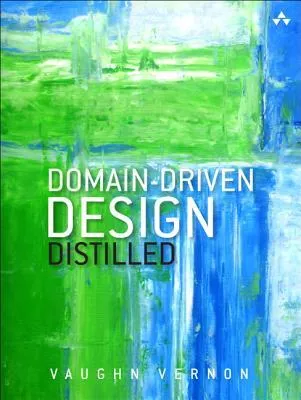Source: Chat-Gpt
Cracking the Coding Interview by Gayle Laakmann McDowell is a popular resource for software engineers preparing for technical interviews. This book provides in-depth explanations, coding problems, and solutions, along with valuable insights into the interview process at major tech companies. It is designed to help candidates understand the technical skills, problem-solving techniques, and strategies necessary to succeed in coding interviews.
Domain-Driven Design Distilled by Vaughn Vernon is a concise and practical guide to understanding and applying Domain-Driven Design (DDD). DDD is an approach to software development that emphasizes collaboration between technical experts and domain experts to create models that reflect complex business requirements. This book distills the core principles of DDD, making them accessible to both beginners and experienced practitioners.
Key Principles and Concepts:
- Domain-Driven Design Overview:
- DDD is about aligning software design with business needs. The goal is to develop a model that captures the core domain logic and communicates effectively with stakeholders.
- Vernon emphasizes that DDD is most valuable for complex domains where business rules and workflows are intricate and require a deep understanding.
- Core Concepts in Domain-Driven Design:
- Domain: The problem space or area of business that the software aims to address.
- Model: A simplification of reality created to solve specific problems within the domain. The model represents domain concepts and their relationships.
- Ubiquitous Language: A shared language between developers and domain experts. This language is used consistently throughout the project to avoid misunderstandings and misinterpretations.
- Bounded Context: A boundary within which a particular domain model is defined and applicable. Different bounded contexts may have their own distinct models and ubiquitous languages.
- Strategic Design:
- Bounded Contexts: The concept of bounded contexts is central to strategic design in DDD. Each bounded context represents a particular part of the domain with its own model, terminology, and language.
- Context Mapping: Helps to identify and understand the relationships between different bounded contexts. Vernon explains patterns like Shared Kernel, Customer-Supplier, and Anti-Corruption Layer, which define how different contexts interact.
- Strategic Patterns: Describes strategic collaboration patterns, including Partnership, Shared Kernel, Customer-Supplier, and Conformist, that inform how different bounded contexts relate and communicate.
- Tactical Design Patterns:
- Tactical design patterns help implement the core domain logic within a bounded context. Vernon introduces and explains essential DDD building blocks, including:
- Entities: Objects with a distinct identity that persists over time. An example might be a
Customerobject with a unique ID. - Value Objects: Immutable objects that describe domain aspects but lack identity. They are defined by their attributes, like
MoneyorDate. - Aggregates: Clusters of entities and value objects that are treated as a single unit of consistency. Aggregates define transactional boundaries and enforce invariants.
- Repositories: Abstractions for accessing and managing aggregates. Repositories provide an interface to store and retrieve domain objects, often from a database.
- Domain Services: Services that encapsulate domain logic that doesn't naturally belong within entities or value objects. They focus on domain operations, often requiring actions across multiple aggregates.
- Entities: Objects with a distinct identity that persists over time. An example might be a
- Tactical design patterns help implement the core domain logic within a bounded context. Vernon introduces and explains essential DDD building blocks, including:
- The Importance of Ubiquitous Language:
- Ubiquitous language is the foundation of DDD. It ensures that all stakeholders, from developers to business experts, are on the same page by using consistent terminology.
- The language evolves alongside the domain model and is reflected in the code, documentation, and discussions.
- Aggregates and Consistency:
- Aggregates define transactional boundaries and should enforce consistency rules within those boundaries. For example, an
Orderaggregate might includeOrderItemsthat must add up to a specific total. - Vernon explains how aggregates should be designed to avoid complexity and prevent issues like race conditions and concurrency conflicts.
- Aggregates define transactional boundaries and should enforce consistency rules within those boundaries. For example, an
- Domain Events:
- Domain events represent significant occurrences within the domain, such as
OrderPlacedorPaymentProcessed. They allow for decoupling different parts of the system by notifying other components of changes without direct dependencies. - Domain events facilitate an event-driven approach to building software, where events can trigger actions in other bounded contexts or systems.
- Domain events represent significant occurrences within the domain, such as
- Implementing DDD with Modern Software Development Practices:
- The book emphasizes the importance of using modern architectural patterns, like microservices and event sourcing, to support the principles of DDD.
- Vernon discusses how bounded contexts align with microservices, as each microservice can represent a specific bounded context. This modularity makes it easier to scale and maintain complex applications.
- Event sourcing is presented as an option for capturing domain events as a source of truth, making it possible to replay events and understand state changes over time.
- Refactoring and Evolving the Model:
- DDD is not a one-time effort. Vernon highlights the need for continuous refactoring and improvement of the domain model.
- Regular refactoring allows the model to evolve in response to new business requirements and insights. This iterative process ensures the software remains aligned with the business over time.
- DDD and Collaboration:
- Collaboration between developers and domain experts is essential in DDD. Vernon emphasizes techniques like Event Storming and collaborative modeling workshops to facilitate this collaboration.
- By working closely with domain experts, developers can uncover nuances in the business logic and build software that better serves the organization.

